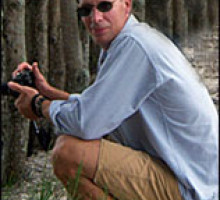
Reviews
The authors did an outstanding job in collecting, analyzing, and organizing current best management practices for aviation wildlife management. I recommend Wildlife in Airport Environments to wildlife professionals and airport managers as the basis for science-based wildlife control programs.
I believe that the book should be read by airport managers, wildlife damage specialists, and wildlife professionals and students in general.
If a book like this had been available some years ago when I started my research on wildlife strikes as a human–wildlife conflict issue, it would have saved me a lot of time
Book Details
Wildlife in Airport Environments
Chapter 1. The History of Wildlife Strikes and Management at Airports
Part I: Wildlife Management Techniques
Chapter 2. Behavior and Physiology in the Development and
Wildlife in Airport Environments
Chapter 1. The History of Wildlife Strikes and Management at Airports
Part I: Wildlife Management Techniques
Chapter 2. Behavior and Physiology in the Development and Application of Visual Deterrents at Airports
Chapter 3. Effectiveness of Chemical Repellents in Managing Birds at Airports
Chapter 4. Tactile and Auditory Repellents to Reduce Wildlife Hazards to Aircraft
Chapter 5. Excluding Mammals from Airports
Chapter 6. Wildlife Translocation as a Management Alternative at Airports
Chapter 7. Population Management to Reduce the Risk of Wildlife–Aircraft Collisions
Part II: Managing Resources
Chapter 8. Identifi cation and Management of Wildlife Food Resources at Airports
Chapter 9. Managing Airport Stormwater to Reduce Attraction to Wildlife
Chapter 10. Managing Turfgrass to Reduce Wildlife Hazards at Airports
Chapter 11. Wildlife Conservation and Alternative Land Uses at Airports
Part III: Wildlife Monitoring
Chapter 12. Understanding Animal Movements at and Near Airports
Chapter 13. Radar Technology to Monitor Hazardous Birds at Airports
Chapter 14. Avian Survey Methods for Use at Airports
Chapter 15. Conclusions and Future Directions
Appendix. Regulations for Wildlife Management at Airports
Index







